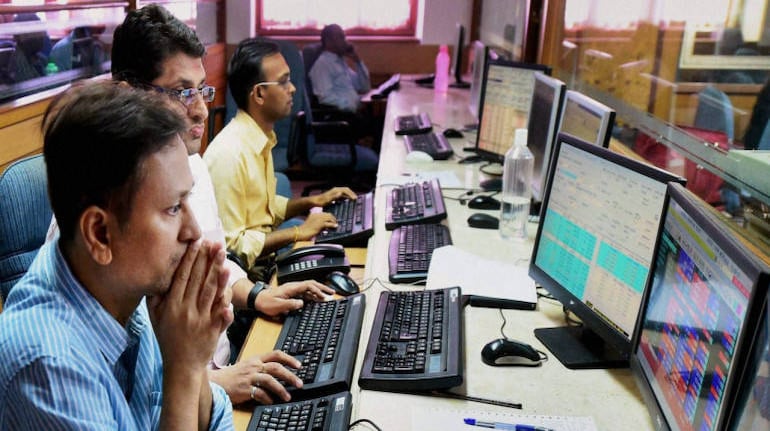



Liquidity and interest rate backdrop is still supportive in CY17 but is less favorable than CY16, Akash Singhania, Dy CIO (Equities) at DHFL Pramerica Asset Managers said. In an exclusive interview with Kshitij Anand of Moneycontrol.com, he said FII inflows into India is likely to surpass investments made in the last two years.
Q) FY17 already created a history as benchmark indices hit a fresh record high. Do you think FY18 will be another year of record highs or markets are likely to stay rangebound?A) Indian equity market has hit a new high in FY17. A good domestic macro, continuation of reforms, benign domestic liquidity and strong global emerging markets has contributed to this performance. Going forward, Indian equities may behave in tandem with emerging market equities.
The market direction in FY18 would be driven by global factors rather than local ones. Triggers for the markets would be a pick-up in global GDP and earnings growth, tax reforms and fiscal stimulus in the US. We expect the global corporate earnings growth to pick up from 1 percent in CY16 to 11 percent in CY17.
We further expect earnings growth for emerging markets to pick up from 9 percent in CY16 to 13 percent in CY17. Earnings growth for Indian markets is expected to pick up from mid-single digits in past three years to mid-teens, and this would remain a driver for market performance.
Q) Do you see liquidity tap to remain open in FY18 amid a rise in US bond yields as well as Federal Reserve rates?A) Liquidity and interest rate backdrop is still supportive in CY17 but is less favorable than CY16. The extent and pace of rate hikes by Fed would affect liquidity as well as the US dollar.
We expect gradual rate hikes by the Fed and we also expect stimulus from European Central Bank and Bank of Japan to continue. FII inflows into India have remained muted in the last two years.
We expect CY17 to be a benign year for FII investments into India, surpassing the investments made in the last two years. This is based on the premise that macro remains strong and India remains an attractive emerging market in terms of robust fundamentals and reasonable valuations.
Visible signs of earnings growth acceleration and execution of reforms would boost inflows into the Indian equity markets.
A) We expect global emerging markets GDP to grow 4.6 percent in CY2017 compared to 4.2 percent in CY2016 with India and China leading the pack. India has a strong macro in terms of growth, interest rates, inflation, fiscal and current account deficit and stable currency compared to most other emerging markets.
CY16 was a year of rising oil and commodity prices which facilitated strong market performance in exporting countries like Brazil and Russia.
India conversely is dependent on imports of oil and commodities. We see stable oil prices in CY17 and hence India would stand out as a relative beneficiary in the emerging market pack with its robust fundamentals vis-à-vis the global peers.
Q) Sectors which according to you will remain hot in the financial year 2018.A) The sectors which we are over-weight are automobiles, private banks, consumer discretionary and cement. The theme which we are playing is consumption as we believe it is a structural story for India.
Rising income and aspiration levels, increasing availability and affordability, seventh pay commission expenditure and implementation of GST are expected to benefit stocks in this space. As per our channel checks, we are seeing a strong recovery in growth in first quarter of CY17 post demonetisation led a slowdown in last two months of CY16.
The theme can be played indirectly through financials or NBFCs which are more levered towards retail financing. Cement is a combination of investment and consumption spending as it caters to demand from housing, construction, and infrastructure sectors.
Consolidation of the industry, firm pricing, greater utilisations and greater demand growth relative to supply growth would drive returns in cement companies.
Q) Any advise you would want to give to your readers to start following in the coming financial year?A) Investment decisions are normally based on the return expectations, risk appetite, time horizon and liquidity requirements of the investors. The systematic investment plan is a steady way to invest superseding the risk of market timing.
Lump sum investment is a good option which could be exercised at running corrections in a secular bull market.
Q) Now that we have clarity on GST, what are your expectations from the Modi govt on reform front in the next FY?A) Expectations from the government are now shifting from passage of reforms to implementation of reforms.
Smooth implementation of GST, resolution of banking system stress and revival of investment cycle are the key things investors are looking forward to being addressed.
Q) Some analysts see Donald Trump as the biggest risk to global markets. What are your views, do you also see 10 percent kind of fall in US markets if tax reforms don't go through?A) Tax reforms, fiscal stimulus and economic and trade policies under the Trump administration would be keenly watched by global investors.
Any failure in implementation of tax reforms or move towards protectionism and trade wars would be viewed sentimentally as negative for global equity markets.
In case the tax reforms do not go through then there could be a knee-jerk reaction in the markets. We do not think that it would lead to a big correction in the markets.
Discover the latest Business News, Sensex, and Nifty updates. Obtain Personal Finance insights, tax queries, and expert opinions on Moneycontrol or download the Moneycontrol App to stay updated!
Find the best of Al News in one place, specially curated for you every weekend.
Stay on top of the latest tech trends and biggest startup news.